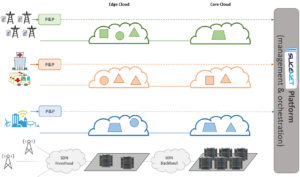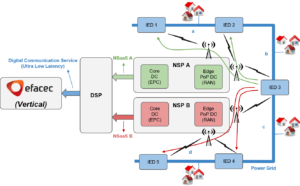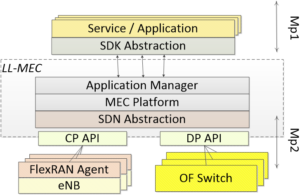 Plug & Play represents a key innovation within the whole of the SliceNet platform, being the main enabler for end-to-end slice customization. SliceNet aims at providing truly customized runtime control, management and operation of end-to-end slice instances while offering vertical-tailored services. The SliceNet Plug & Play control framework is one of the key enablers of slice customization, as it offers a novel combination of tailored control functions, APIs and tools. These are offered to verticals to let them plug their own control logics and customise their slice instances according to their specific needs.
Plug & Play represents a key innovation within the whole of the SliceNet platform, being the main enabler for end-to-end slice customization. SliceNet aims at providing truly customized runtime control, management and operation of end-to-end slice instances while offering vertical-tailored services. The SliceNet Plug & Play control framework is one of the key enablers of slice customization, as it offers a novel combination of tailored control functions, APIs and tools. These are offered to verticals to let them plug their own control logics and customise their slice instances according to their specific needs.
The SliceNet Plug & Play provides an innovative control environment, dedicated per slice. For vertical consumers, and in general, for slice consumers, this means a significantly enhanced degree of flexibility for deploying services to the end users. It exposes a direct control of slice instances and provides a new flavour of customization, at two main levels:
- it enables slice providers to activate all those specific per-slice SDN and NFV control functions needed to accommodate vertical requirements, in terms of network function composition, as well as performance and QoE; and
- it allows verticals to further control their slices and services by plugging their own customized functions, enabling the deployment of specific 5G services in a truly customisable, dynamic and scalable way.
Nextworks is leading the SliceNet efforts towards the design and software development of the Plug & Play framework, which is planned to be delivered in Q4 2018.


 The deployment of the Smart Grid self-healing scenario in the Altice/Efacec testbed has already started, which will allow us to exercise the main concepts of SliceNet. Primarily, SliceNet wants to address the creation of an End-to-End network slice for the energy vertical in a multi domain network architecture.
The deployment of the Smart Grid self-healing scenario in the Altice/Efacec testbed has already started, which will allow us to exercise the main concepts of SliceNet. Primarily, SliceNet wants to address the creation of an End-to-End network slice for the energy vertical in a multi domain network architecture.

 Mr Thomas Tovinger, Chairman of the 3GPP SA5 (Architecture) group, has posted a very interesting article in the 3GPP pages:
Mr Thomas Tovinger, Chairman of the 3GPP SA5 (Architecture) group, has posted a very interesting article in the 3GPP pages:  MWC 2018 saw the 5G Infrastructure Association (5G-IA) and 5G PPP under the spotlight, with important announcements from the telco industry and policy makers.
MWC 2018 saw the 5G Infrastructure Association (5G-IA) and 5G PPP under the spotlight, with important announcements from the telco industry and policy makers.